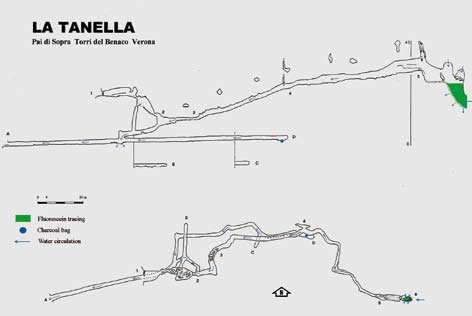Tanella cave (Monte Baldo-Verona, Italy): a record of environmental data on the last glacial period
DOI:
https://doi.org/10.3986/ac.v40i1.37Povzetek
Since 2003, an extensive hydrogeological investigation has been carried out on Monte Baldo, in order to make a census of springs occurring along the west side of the mountain and to evaluate the quality of their water. The investigation included morphological and hydrogeological observations concerning the Tanella cave and interdisciplinary investigations performed on the deposits found in the cave. This paper shows the first data concerning the hydrogeology of the cave, as well as data on stratigraphy, pollen and micro-charcoals obtained from the analyses of a well preserved sequence located at ca. 80 m from the entrance (sequence A). The aim of the study was to reconstruct the environment of the area around the cave along the time span testified by the sequence. The sequence is 60 cm thick and was built up by fluvioglacial sediments followed by lacustrine sediments. Five samples taken along the sequence plus three recent control samples (mosses), collected in places assumed as origins of the pollen input, were studied for pollen and micro-charcoals. Pollen preservation was good and concentration varied from 101 to 103 p/g. Pollen spectra from the cave showed the evolution from a landscape of alpine grassland above the timberline, likely of glacial age, to a more forested Holocene landscape similar in flora to the current one testified by the control samples. Pollen probably arrived in the cave by air, water and animals and from plants growing near the cave. It appears to have been continuously underwater after its deposition due to its very good state of preservation. Micro-charcoals suggested that fires were sometimes lit near the cave.
Prenosi

Prenosi
Objavljeno
Kako citirati
Številka
Rubrike
Licenca
Avtorji jamčijo, da je delo njihova avtorska stvaritev, da v njem niso kršene avtorske pravice tretjih oseb ali kake druge pravice. V primeru zahtevkov tretjih oseb se avtorji zavezujejo, da bodo varovali interese založnika ter da bodo povrnili morebitno škodo.
Podrobneje v rubriki: Prispevki




